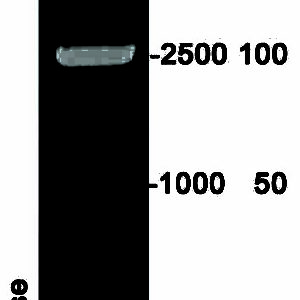Description
This product contains pfu DNA polymerase, dNTPs, Mg2+, reaction buffer, enhancer and optimizer for PCR reaction, and stabilizer at a concentration of 2×. When used, the PCR reaction can be carried out by simply adding the primers and templates required for the experiment, which can minimize human error, and has the advantages of quickness, simplicity, and good stability. For the amplification of high fidelity DNA fragments. The PCR amplification product obtained using this product was a smooth end and could not be directly used for TA cloning, and was cloned by a smooth end cloning method. Using λDNA as a template, a 5 kb DNA fragment can be amplified well; a rice genomic template can be used to amplify a 3.2 kb DNA fragment.
Product number and specifications :
| ZK06037 | 2×pfu PCR MasterMix(Dye-containing) | 0.5ml x 1 |
| ZK06038 | 2×pfu PCR MasterMix(Dye-containing) | 0.5ml x 5 |
| ZK06039 | 2×pfu PCR MasterMix(No dye) | 0.5ml x 1 |
| ZK06040 | 2×pfu PCR MasterMix(No dye) | 0.5ml x 5 |
Storage conditions: -20℃ for long-term storage; stable storage at 4℃ for 3 months. When used frequently, once stored, please store at 4℃, try to avoid repeated freezing and thawing.
Instructions:
- Thoroughly melt 2X MasterMix in an ice bath. After mixing, Minispin collects the solution to the bottom of the tube.
- Prepare the reaction system in a 0.2 ml PCR tube according to the following table:
| 50μlreaction system | Final concentration | |
| 2×MasterMix | 25μl | 1× |
| Upstream primer 10μM | 1-5μl | 0.2-0.8 μM |
| Downstream primer 10μM | 1-5μl | 0.2-0.8 μM |
| Template | μl | 10pg-1μg |
| ddH2O | Supplement to 50μl |
- Centrifuge the reaction solution to the bottom of the tube.
- If the PCR machine is not heated by a hot lid, add 25 μl of mineral oil.
- Perform the following procedure on the PCR machine:
| Step | Temperature | Time | Cycle |
| Initial Denaturation | 94℃ | 5min | 1 |
| Transsexual | 94℃ | 30sec |
25-40 |
| Annealing | Tm-5℃ | 30sec | |
| Extend | 72℃ | 1min/kb | |
| Final extension | 72℃ | 5min | 1 |
Note: The PCR reaction conditions vary depending on the structural conditions of the template, primers, and the like. In actual practice, the optimal reaction conditions (temperature, time, etc.) should be set according to the specific conditions such as the size of the template, the size of the target fragment, the length of the base, and the length of the primer.
- Electrophoresis detection.
Note: 2×MasterMix containing dye can be loaded directly; 2×MasterMix without dye should be mixed with 6×loading buffer and loaded.




